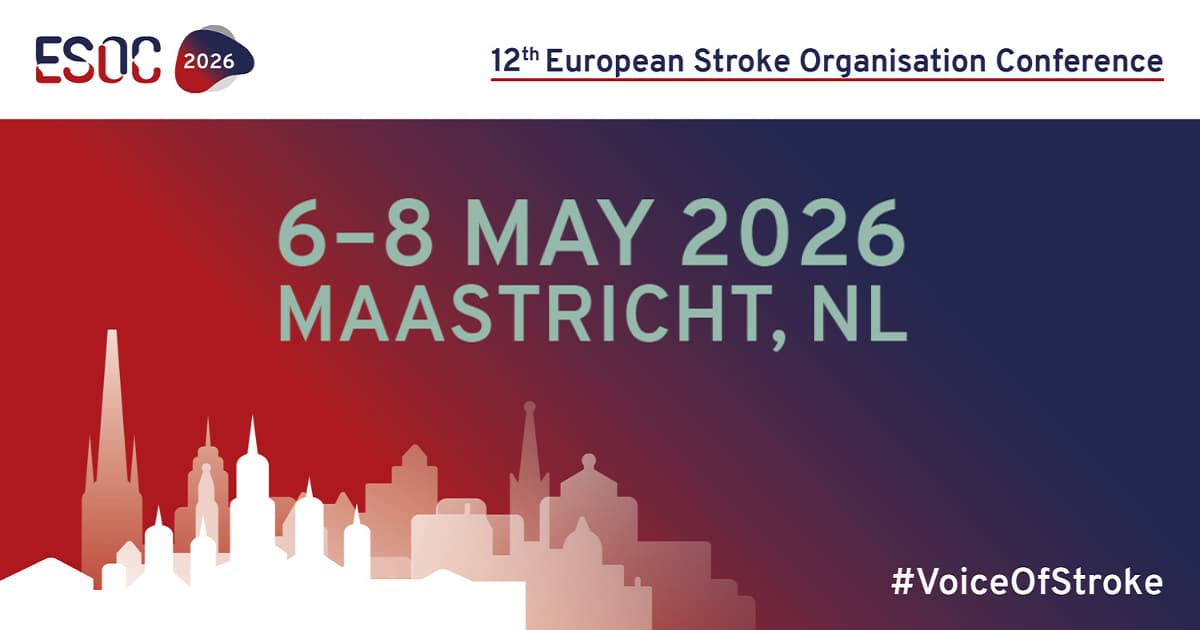Journal Description
NeuroSci
NeuroSci
is an international, peer-reviewed, open access journal on neurology and neuroscience published quarterly online by MDPI. The Panhellenic Federation of Alzheimer's Disease and Related Disorders (PFADRD) is affiliated with NeuroSci, and its members receive discounts on the article processing charges.
- Open Access— free for readers, with article processing charges (APC) paid by authors or their institutions.
- High Visibility: indexed within ESCI (Web of Science), PMC, PubMed, EBSCO, and other databases.
- Rapid Publication: manuscripts are peer-reviewed and a first decision is provided to authors approximately 27.1 days after submission; acceptance to publication is undertaken in 4.9 days (median values for papers published in this journal in the first half of 2025).
- Recognition of Reviewers: APC discount vouchers, optional signed peer review and reviewer names are published annually in the journal.
- Journal Cluster of Neurosciences: Brain Sciences, Neurology International, NeuroSci, Clinical and Translational Neuroscience, Neuroglia, Psychiatry International, Clocks & Sleep and Journal of Dementia and Alzheimer's Disease.
Impact Factor:
2.0 (2024);
5-Year Impact Factor:
1.7 (2024)
Latest Articles
Brain Metastatic Lung Cancer Patients: A Multitarget Therapeutic-Supportive Strategy with Anti-STAT3 Silibinin
NeuroSci 2025, 6(4), 131; https://doi.org/10.3390/neurosci6040131 - 18 Dec 2025
Abstract
►
Show Figures
Background: Innovative treatments for lung cancer patients have significantly improved their lives. Therefore, patients who develop brain metastases are more likely to require management of quality of life (QoL) by reducing pathological decline in brain function. New therapeutic strategies have allowed us to
[...] Read more.
Background: Innovative treatments for lung cancer patients have significantly improved their lives. Therefore, patients who develop brain metastases are more likely to require management of quality of life (QoL) by reducing pathological decline in brain function. New therapeutic strategies have allowed us to manage brain metastases, thanks to the ability to cross the blood–brain barrier. Moreover, new molecules have been designed as adjuvants to standard treatments for the management of cancer patients with brain metastases. Methods: We implemented a descriptive, observational, retrospective study. Therefore, we consecutively collected the data of eighty-six (N = 86) patients admitted to our department (April 2020–April 2025) diagnosed with brain involvement in a thoracic neoplasm and treated with silibinin, in association with standard treatment. The main endpoint of our analysis is to define the safety profile of silibinin and to evaluate its eventual benefits in terms of QoL. Results: Silibinin was well tolerated (only one mild adverse event was reported); furthermore, patients taking silibinin had a good quality of life that was maintained over a long period of time, and in some cases, an improvement in neurological symptoms and overall patient well-being was also documented. Conclusions: Our study is the first collection of a large number of lung cancer patients with brain metastasis taking silibinin, which is very well tolerated and allows patients to maintain a good QoL.
Full article
Open AccessSystematic Review
The Role of Vitamin D in Parkinson’s Disease: Evidence from Serum Concentrations, Supplementation, and VDR Gene Polymorphisms
by
Jamir Pitton Rissardo and Ana Leticia Fornari Caprara
NeuroSci 2025, 6(4), 130; https://doi.org/10.3390/neurosci6040130 - 16 Dec 2025
Abstract
Background/aim: Vitamin D (VitD) has been implicated in neuroprotection, yet its role in Parkinson’s disease (PD) remains unclear. This systematic review and meta-analysis aimed to evaluate the association between VitD status, supplementation, and vitamin D receptor (VDR) gene polymorphisms with PD
[...] Read more.
Background/aim: Vitamin D (VitD) has been implicated in neuroprotection, yet its role in Parkinson’s disease (PD) remains unclear. This systematic review and meta-analysis aimed to evaluate the association between VitD status, supplementation, and vitamin D receptor (VDR) gene polymorphisms with PD risk and outcomes. Methodology: Following PRISMA guidelines, we searched PubMed, Scopus, and Google Scholar through August 2025 for observational studies, clinical trials, and genetic association studies. Primary outcomes included serum VitD levels in PD versus healthy controls (HCs), prevalence of VitD insufficiency/deficiency, and effects of VitD supplementation on motor symptoms. Secondary outcomes assessed associations between VDR polymorphisms and PD susceptibility. Data were synthesized using random- and fixed-effects models, with heterogeneity and publication bias evaluated. PROSPERO (CRD420251133875). Results: Sixty-three studies (n ≈ 10,700 participants) met inclusion criteria. PD patients exhibited significantly lower VitD levels (SMD = −0.46; 95% CI: −0.51 to −0.41) and higher odds of insufficiency (OR = 1.52) and deficiency (OR = 2.20) compared to HC. Cohort data suggested sufficient VitD may reduce PD risk (HR = 0.83). Supplementation yielded modest, non-significant improvements in motor outcomes. Among 20 genetic studies, FokI (rs2228570) was most consistently associated with PD, while other VDR SNPs showed variable or null associations. Conclusions: VitD deficiency is common in PD and may influence disease risk and motor function. Current evidence indicates limited benefit of supplementation for motor outcomes, and genetic associations remain inconsistent.
Full article
(This article belongs to the Special Issue Parkinson's Disease Research: Current Insights and Future Directions)
►▼
Show Figures

Figure 1
Open AccessArticle
Comparison of Cardiorenal Syndrome and Heart Failure: A Preliminary Study of Clinical, Cognitive, and Emotional Aspects
by
Maria Pagano, Anna Anselmo, Giuseppe Micali, Fabio Mauro Giambò, Francesco Speciale, Daniela Costanzo, Piercataldo D’Aleo, Antonio Duca, Alessia Bramanti, Marina Garofano, Placido Bramanti, Francesco Corallo and Irene Cappadona
NeuroSci 2025, 6(4), 129; https://doi.org/10.3390/neurosci6040129 - 15 Dec 2025
Abstract
►▼
Show Figures
Background: Cardiovascular diseases (CVD) affect the heart and blood vessels. Cardiorenal syndrome (CRS) highlights the interaction between the heart and kidneys, worsening the clinical course. Assessing renal function is essential for risk stratification and guiding therapeutic decisions. Furthermore, cognitive and psychological aspects are
[...] Read more.
Background: Cardiovascular diseases (CVD) affect the heart and blood vessels. Cardiorenal syndrome (CRS) highlights the interaction between the heart and kidneys, worsening the clinical course. Assessing renal function is essential for risk stratification and guiding therapeutic decisions. Furthermore, cognitive and psychological aspects are often impaired in these patients. Aim: To compare clinical, cognitive, emotional, and quality of life parameters between patients with CRS and those with heart failure (HF) alone, and to assess the agreement between estimated glomerular filtration rate equations (Cockcroft–Gault and CKD-EPI). Methods: This observational study was conducted at the Cardiology Unit of the IRCCS Centro Neurolesi Bonino Pulejo “Piemonte” Hospital (Messina, Italy) between June 2024 and March 2025. Thirty participants aged 45–85 years were enrolled: 15 with type 1 cardiorenal syndrome (CRS group) and 15 with heart failure without cardiorenal syndrome (HF group). All participants had a confirmed diagnosis and provided informed consent. Clinical evaluation and standardized tests (MoCA, BDI-II, BAI, and SF-12v2) were administered. Statistical analyses were performed using t-tests, chi-square tests, and Bland–Altman analysis, with significance set at p < 0.05. Results: The two groups were comparable in body mass index and left ventricular ejection fraction. CRS patients had significantly higher serum creatinine and lower GFR with both equations. The two GFR equations were strongly correlated (r = 0.94; p < 0.0001). Bland–Altman analysis showed a mean difference of 5.80 mL/min (95% limits of agreement: –12.4 to +24.0 mL/min), indicating wide individual variability. No significant differences were found in cognitive performance or quality of life. However, CRS patients exhibited significantly higher depressive symptoms (BDI-II mean 11.33 ± 8.19 vs. 5.40 ± 6.68; p = 0.0384) and a trend toward higher anxiety (BAI mean 8.13 ± 4.73 vs. 4.67 ± 5.79; p = 0.0834). Conclusions: A multidisciplinary approach, including psychological support, is necessary for patients with CRS.
Full article
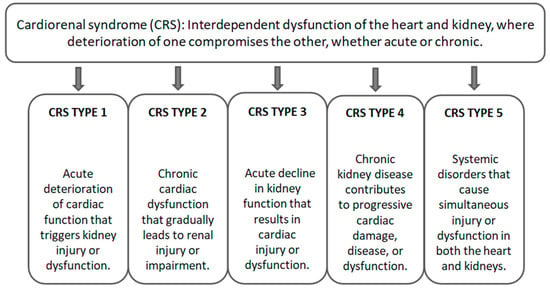
Figure 1
Open AccessArticle
Participation Outcomes One Year After Aneurysmal Subarachnoid Hemorrhage: Associations with Cognition, Coping, and Psychological Distress
by
Angelka Pešterac-Kujundžić, Una Nedeljković, Ivana Sretenović, Aleksandar Milosavljević, Dragoslav Nestorovic, Ivan Vukašinović and Vojislav Bogosavljević
NeuroSci 2025, 6(4), 128; https://doi.org/10.3390/neurosci6040128 - 10 Dec 2025
Abstract
►▼
Show Figures
This study evaluated participation outcomes one year after aneurysmal subarachnoid hemorrhage (aSAH) compared with matched healthy controls and identified factors associated with participation within the patient group. Forty aSAH survivors and seventy-five controls were assessed 12–14 months post-ictus. Participation was measured with the
[...] Read more.
This study evaluated participation outcomes one year after aneurysmal subarachnoid hemorrhage (aSAH) compared with matched healthy controls and identified factors associated with participation within the patient group. Forty aSAH survivors and seventy-five controls were assessed 12–14 months post-ictus. Participation was measured with the Utrecht Scale for Evaluation of Rehabilitation–Participation (USER-P), psychological distress with the Hospital Anxiety and Depression Scale (HADS), coping with the Brief COPE, and cognition with the Montreal Cognitive Assessment (MoCA). Compared with controls, patients reported greater participation restrictions (82 vs. 100, p < 0.001), lower frequency (35 vs. 51, p < 0.001), and reduced satisfaction (65 vs. 75, p < 0.001). Anxiety, depression, and avoidant coping independently predicted restrictions (adjusted R2 = 0.48), while satisfaction was predicted by employment, fewer depressive symptoms, and less avoidant coping (adjusted R2 = 0.52). Lower MoCA scores predicted reduced participation frequency (p = 0.032), and patients with cognitive impairment showed significantly greater restrictions and lower satisfaction. One year after aSAH, survivors experience substantial participation limitations associated with psychological distress, maladaptive coping, and cognitive deficits. These results underscore the importance of cognitive and psychological rehabilitation to enhance long-term participation and social reintegration after aSAH.
Full article
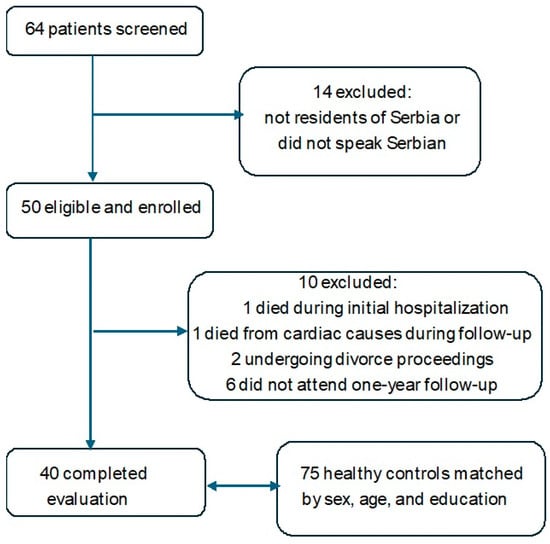
Figure 1
Open AccessRetraction
RETRACTED: Jarero-Basulto et al. Cytotoxic Effect of Amyloid-β1-42 Oligomers on Endoplasmic Reticulum and Golgi Apparatus Arrangement in SH-SY5Y Neuroblastoma Cells. NeuroSci 2024, 5, 141–157
by
José J. Jarero-Basulto, Yadira Gasca-Martínez, Martha C. Rivera-Cervantes, Deisy Gasca-Martínez, Nidia Jannette Carrillo-González, Carlos Beas-Zárate and Graciela Gudiño-Cabrera
NeuroSci 2025, 6(4), 127; https://doi.org/10.3390/neurosci6040127 - 10 Dec 2025
Abstract
The journal retracts the article “Cytotoxic Effect of Amyloid-β1-42 Oligomers on Endoplasmic Reticulum and Golgi Apparatus Arrangement in SH-SY5Y Neuroblastoma Cells” [...]
Full article
Open AccessReview
Where Is the Oxygen? The Mirage of Non-Oxidative Glucose Consumption During Brain Activity
by
Avital Schurr
NeuroSci 2025, 6(4), 126; https://doi.org/10.3390/neurosci6040126 - 9 Dec 2025
Abstract
►▼
Show Figures
Ever since the discovery that neuronal tissue can utilize lactate as an aerobic substrate for mitochondrial adenosine triphosphate (ATP) production, a debate has ensued between those who have questioned the importance of lactate in brain energy metabolism and those who argue that lactate
[...] Read more.
Ever since the discovery that neuronal tissue can utilize lactate as an aerobic substrate for mitochondrial adenosine triphosphate (ATP) production, a debate has ensued between those who have questioned the importance of lactate in brain energy metabolism and those who argue that lactate plays a central role in this process. The “neuron astrocyte lactate shuttle hypothesis” has sharpened this debate since it postulates lactate to be the oxidative energy substrate for activated neurons. Those who minimize lactate’s role insist that a non-oxidative process they termed “aerobic glycolysis” supports brain activation, despite oxygen availability. To explain the paradox that the active brain would utilize the inefficient glycolysis over the much more efficient mitochondrial oxidative phosphorylation (OXPHOS) for ATP production, they suggested the “efficiency tradeoff hypothesis,” where the inefficiency of the glycolytic pathway is traded for speed necessary for the information transfer of the active brain. In contrast, other studies reveal that oxidative energy metabolism is the process that supports brain activation, refuting both the “aerobic glycolysis” concept and the premise of the “efficiency tradeoff hypothesis”. These studies also shed doubts on the usefulness of the blood oxygenation dependent functional magnetic resonance imaging (BOLD fMRI) method and its signal as an appropriate tool for the estimation of brain oxygen consumption, as it is unable to detect any oxygen present in the extravascular brain tissue.
Full article
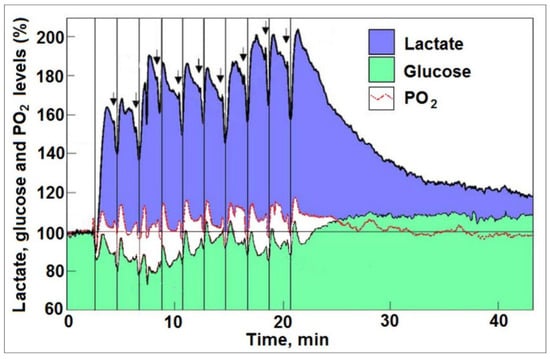
Figure 1
Open AccessPerspective
Advanced Cellular Models for Neurodegenerative Diseases and PFAS-Related Environmental Risks
by
Davide Rotondo, Laura Lagostena, Valeria Magnelli and Francesco Dondero
NeuroSci 2025, 6(4), 125; https://doi.org/10.3390/neurosci6040125 - 8 Dec 2025
Abstract
►▼
Show Figures
Per- and polyfluoroalkyl substances are persistent environmental contaminants increasingly implicated in neurotoxicity. Establishing causality and mechanisms relevant to Alzheimer’s disease, Parkinson’s disease, and multiple sclerosis requires human-relevant systems that capture exposure, barrier function, and brain circuitry. We review advanced cellular platforms—iPSC-derived neuronal and
[...] Read more.
Per- and polyfluoroalkyl substances are persistent environmental contaminants increasingly implicated in neurotoxicity. Establishing causality and mechanisms relevant to Alzheimer’s disease, Parkinson’s disease, and multiple sclerosis requires human-relevant systems that capture exposure, barrier function, and brain circuitry. We review advanced cellular platforms—iPSC-derived neuronal and glial cultures, cerebral and midbrain organoids, and chip-based microphysiological systems—that model disease-relevant phenotypes (Aβ/tau pathology, dopaminergic vulnerability, myelination defects) under controlled PFAS exposures and defined genetic risk backgrounds. Modular, fluidically coupled BBB-on-chip → brain-organoid microphysiological systems have been reported, enabling chronic, low-dose PFAS perfusion under physiological shear, real-time barrier integrity readouts such as transepithelial/transendothelial electrical resistance (TEER), quantification of PFAS partitioning and translocation, and downstream neuronal–glial responses assessed by electrophysiology and multi-omics. Across platforms, convergent PFAS-responsive processes emerge—mitochondrial dysfunction and oxidative stress, lipid/ceramide dysregulation, neuroinflammatory signaling, and synaptic/network impairments—providing a mechanistic scaffold for biomarker discovery and gene–environment interrogation with isogenic lines. We outline principles for exposure design (environmentally relevant ranges, longitudinal paradigms), multimodal endpoints (omics, electrophysiology, imaging), and cross-lab standardization to improve comparability. Together, these models advance the quantitative evaluation of PFAS neurotoxicity and support translation into risk assessment and therapeutic strategies.
Full article
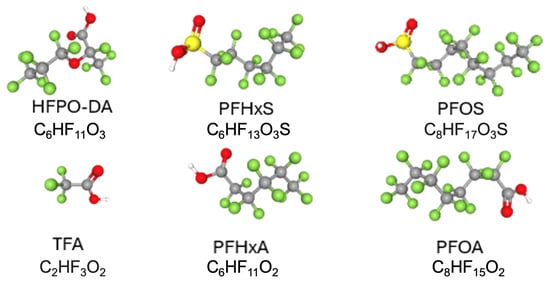
Figure 1
Open AccessArticle
The Weight of Eloquence in Motor Area Glioblastoma: Oncologic Outcome After nTMS-Guided Surgical Resection
by
Luca Sartori, Samuel Luciano Caliri, Roberto Colasanti, Pietro Dalla Zuanna, Nicola Bresolin, Valentina Baro, Pietro Ciccarino, Francesco Volpin, Franco Chioffi, Luca Denaro and Andrea Landi
NeuroSci 2025, 6(4), 124; https://doi.org/10.3390/neurosci6040124 - 3 Dec 2025
Abstract
►▼
Show Figures
Background: Glioblastomas (GBMs) in eloquent areas, particularly within the motor system, represent a significant surgical challenge due to the risk of postoperative neurological deficits. This study evaluates the effectiveness of a structured preoperative protocol, including nTMS-guided motor mapping, to optimize surgical outcomes and
[...] Read more.
Background: Glioblastomas (GBMs) in eloquent areas, particularly within the motor system, represent a significant surgical challenge due to the risk of postoperative neurological deficits. This study evaluates the effectiveness of a structured preoperative protocol, including nTMS-guided motor mapping, to optimize surgical outcomes and minimize neurological deficits, with a particular focus on the timing of adjuvant oncological therapy initiation. Methods: A retrospective analysis was conducted on 44 GBM patients, divided into two groups: 11 with motor area lesions (group A) and 33 with non-eloquent lesions (group B). All patients underwent a standardized preoperative protocol. Surgical outcomes (EORs), neurological function (MRC score and KPS index), time to oncological therapy initiation and survival (OS and PFS) were compared between groups. Results: Both groups achieved high rates of GTR without significant differences in EOR (72.7% group A vs. 78.8% group B). Although group A exhibited a higher incidence of postoperative motor deficits, motor function at three-month follow-up was similar between groups. Time to initiation of oncological therapy did not differ between groups (40.6 days group A vs. 41.9 days group B, p = 0.719), highlighting that preservation of motor function helped minimize delays in starting oncological therapy. No significant differences were found in survival outcomes. Conclusions: A structured preoperative protocol incorporating nTMS motor mapping allows for safe and aggressive resection of motor-area GBMs. This approach effectively mitigates the risk of delays in initiating adjuvant oncological therapy, optimizing the patient prognosis. Further studies are needed to explore the long-term benefits of this protocol in both functional and oncological outcomes.
Full article
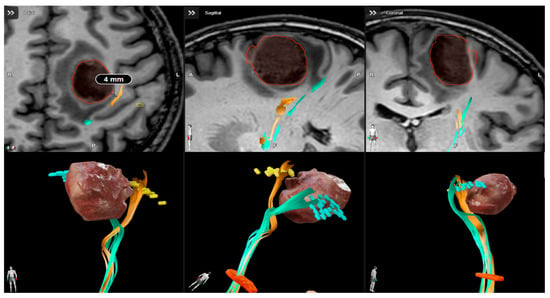
Figure 1
Open AccessArticle
Multimodal Canonical Correlation Analysis with Joint Independent Component Analysis (mCCA+jICA) of IVIM and ASL MRI Reveals Perfusion and Diffusion Abnormalities in mTBI—A Pilot Study
by
Maurizio Bergamino, Lauren R. Ott, Molly M. McElvogue, Ruchira Jha, Cindy Moreno and Ashley M. Stokes
NeuroSci 2025, 6(4), 123; https://doi.org/10.3390/neurosci6040123 - 3 Dec 2025
Abstract
►▼
Show Figures
Mild traumatic brain injury (mTBI) frequently causes subtle brain changes that are difficult to detect with conventional diagnostic approaches. In this exploratory pilot study, we combined tri-exponential intravoxel incoherent motion (IVIM) and pseudocontinuous arterial spin labeling (pCASL) MRI with Multimodal Canonical Correlation Analysis
[...] Read more.
Mild traumatic brain injury (mTBI) frequently causes subtle brain changes that are difficult to detect with conventional diagnostic approaches. In this exploratory pilot study, we combined tri-exponential intravoxel incoherent motion (IVIM) and pseudocontinuous arterial spin labeling (pCASL) MRI with Multimodal Canonical Correlation Analysis and joint independent component analysis (mCCA+jICA) to identify imaging signatures distinguishing mTBI patients from healthy controls (HCs) and their associations with clinical function. Cerebral blood flow (CBF) and IVIM-derived metrics were extracted from 90 brain regions in 19 mTBI patients and 24 HCs, and multivariate components were identified using mCCA+jICA. Two independent components (IC2, IC15) showed group differences at the uncorrected level (p < 0.05) but did not survive false discovery rate (FDR) correction. IC2 correlated positively with CBF and perfusion fraction (Fp) and negatively with tissue diffusion fraction (Fs), consistent with reduced vascular integrity in mTBI, while IC15 showed similar trends. One component correlated with Glasgow Outcome Scale–Extended (GOS-E) scores (uncorrected p = 0.046). Although this study is preliminary and limited by a small sample size, our findings suggest that mTBI is associated with perfusion and microstructural alterations, particularly in subcortical regions, and demonstrate the potential value of combining IVIM and ASL within multivariate fusion frameworks to reveal patterns not captured by single-modality approaches.
Full article
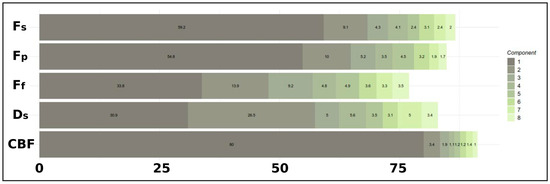
Figure 1
Open AccessArticle
Relationship Between Brain Lesions in Patients with Post-Stroke Aphasia and Their Performance in Neuropsychological Language Assessment
by
Jorge Romero-Castillo, Miguel Ángel Rivas-Fernández, Benxamín Varela-López, Susana Cid-Fernández and Santiago Galdo-Álvarez
NeuroSci 2025, 6(4), 122; https://doi.org/10.3390/neurosci6040122 - 1 Dec 2025
Abstract
►▼
Show Figures
Several recent studies have utilized neuroimaging to delineate the localization and function of brain regions involved in language. However, many uncertainties persist regarding the organization of the linguistic system in the human brain. The aim of the present study was to characterize the
[...] Read more.
Several recent studies have utilized neuroimaging to delineate the localization and function of brain regions involved in language. However, many uncertainties persist regarding the organization of the linguistic system in the human brain. The aim of the present study was to characterize the structural changes produced in a sample of 9 patients with post-stroke aphasia (4 women; mean age = 60 years, SD = 14.86) and their relationship with performance in the entire Boston Diagnostic Aphasia Examination (BDAE). Magnetic Resonance Imaging was acquired from the brain of each patient and brain lesions were assessed. Disconnection’s severity of each white matter tract by embedding the lesion into the streamline tractography atlas of the Human Connectome Project was analyzed, and grey matter lesion load using a 7-Network Cortical parcellation template was estimated, with additional subcortical, cerebellar and brainstem parcels. Finally, all data obtained was correlated with performance in the BDAE. Somatomotor network correlated with repetition scale. The disconnection of the left acoustic radiation and inferior longitudinal fasciculus correlated with repetition sub-scale. Finally, the left U-fibers correlated with severity (a BDAE sub-scale that assesses the patient’s communicative skills), conversational speech and reading sub-scales. These findings emphasized that the disconnection of these fronto-parieto-temporal structures correlate with deficits in repetition, beyond the classical hypothesis attributing such deficits solely to the impairment of the arcuate fasciculus.
Full article

Figure 1
Open AccessReview
Stroke Management in the Intensive Care Unit: Ischemic and Hemorrhagic Stroke Care
by
Aleksandar Sič, Vasilis-Spyridon Tseriotis, Božidar Belanović, Marko Nemet and Marko Baralić
NeuroSci 2025, 6(4), 121; https://doi.org/10.3390/neurosci6040121 - 26 Nov 2025
Abstract
►▼
Show Figures
Stroke is the second-largest cause of death and disability worldwide, and many patients require intensive care for airway compromise, hemodynamic instability, cerebral edema, or systemic complications. This review summarizes key aspects of ICU management in both acute ischemic stroke (AIS) and hemorrhagic stroke
[...] Read more.
Stroke is the second-largest cause of death and disability worldwide, and many patients require intensive care for airway compromise, hemodynamic instability, cerebral edema, or systemic complications. This review summarizes key aspects of ICU management in both acute ischemic stroke (AIS) and hemorrhagic stroke (HS). Priorities are airway protection, oxygenation, individualized blood pressure targets, and strict control of temperature and glucose. Neurological monitoring and prompt management of intracranial pressure (ICP), together with timely surgical interventions (hemicraniectomy or hematoma evacuation), are central to acute care. Seizures are treated promptly, while routine prophylaxis is not recommended. Prevention of aspiration pneumonia, venous thromboembolism, infections, and other intensive care unit (ICU) complications is essential, along with early nutrition, mobilization, and rehabilitation. Prognosis and decisions about intensity of care require shared discussions with families and involvement of palliative services, when appropriate. Many practices remain based on observational data or extrapolation from other populations, underlining the need for stroke-specific clinical trials. Outcomes are consistently better when patients are managed in specialized stroke or neurocritical care units with a multidisciplinary treatment approach
Full article

Graphical abstract
Open AccessViewpoint
The Metabolic Mind: Revisiting Glucose Metabolism and Justice Involvement in Neurolaw
by
Alan C. Logan, Colleen M. Berryessa, Jeffrey M. Greeson, Pragya Mishra and Susan L. Prescott
NeuroSci 2025, 6(4), 120; https://doi.org/10.3390/neurosci6040120 - 24 Nov 2025
Abstract
►▼
Show Figures
Neuropsychiatric interest in the relationship between glucose metabolism and criminal behavior dates back nearly a century. In particular, hypoglycemia was thought to play a causative role in some criminal acts, especially non-planned incidents involving impulsivity and in-the-moment risk-taking or aggression. While interest in
[...] Read more.
Neuropsychiatric interest in the relationship between glucose metabolism and criminal behavior dates back nearly a century. In particular, hypoglycemia was thought to play a causative role in some criminal acts, especially non-planned incidents involving impulsivity and in-the-moment risk-taking or aggression. While interest in carbohydrate metabolism in forensic populations faded in the 1990s, recent years have witnessed a renewed interest in metabolic dysfunction, mental health, and cognition. This area of research has grown increasingly robust, bolstered by mechanistic discoveries, epidemiological work, and intervention trials. Advances in microbiome (legalome) sciences, aided by omics technologies, have allowed researchers to match objective markers (i.e., from genomics, epigenomics, transcriptomics, and metabolomics) with facets of cognition and behavior, including aggression. These advances, especially the concentrated integration of microbiome and omics, have permitted novel approaches to the subject of glucose metabolism, and cast new light on older studies related to justice involvement. With current technologies and contemporary knowledge, there are numerous opportunities for revisiting the subject of glucose metabolism in the context of neurolaw. Here in this viewpoint article, we reflect on the historical research and emergent findings, providing ideation for future directions.
Full article

Figure 1
Open AccessArticle
The Transverse Process as a Landmark for Estimating Dural Sac Depth and Feasible Planes for Optimized Paramedian Needle Insertions
by
Anna Puigdellívol-Sánchez, Hipólito Labandeyra, Alberto Prats-Galino and Xavier Sala-Blanch
NeuroSci 2025, 6(4), 119; https://doi.org/10.3390/neurosci6040119 - 21 Nov 2025
Abstract
►▼
Show Figures
Background: The skin-to-transverse process distance (st) correlates with the skin-to-dural sac depth (d) and may be used to estimate optimal angles for perpendicular needle insertion using the formula inverse cosine d/√(1 + d2), as outlined in free visual guides. Objective: We
[...] Read more.
Background: The skin-to-transverse process distance (st) correlates with the skin-to-dural sac depth (d) and may be used to estimate optimal angles for perpendicular needle insertion using the formula inverse cosine d/√(1 + d2), as outlined in free visual guides. Objective: We aimed to analyze the relationship between the transverse process and dural sac depth at lumbar levels relevant to spinal anesthesia and to determine the range of planes where perpendicular paramedian needle insertion is feasible when midline access is not viable. Methods: Ten ex vivo trunks were flexed using an abdominal support, and CT scans were performed. Correlations between the transverse process and dural sac depth were evaluated from L3 to S1. Perpendicular planes at the level of needle paths were examined at L3–L4 and L4–L5. Median path viability was assessed. Results: The transverse process aligned with the dorsal dural sac at L3, the posterior third at L4, and the middle zone at L5 or S1. Median needle insertion was not viable in 20–30% of L4–L5 and L3–L4 levels, respectively. However, paramedian access was possible. The vertical range of viable paramedian planes was 8.7 ± 2.9 mm (L4–L5) and 7.9 ± 1.9 mm (L3–L4). Coronal reconstructions showed that the upper level of the transverse process correlates with the skin-perpendicular planes where insertion is likely to succeed. Conclusion: Many elderly spines lack viable midline paths. The superior aspect of the transverse process serves as a useful landmark for estimating dural sac depth, calculating paramedian angles, and identifying the plane for successful perpendicular needle insertion.
Full article
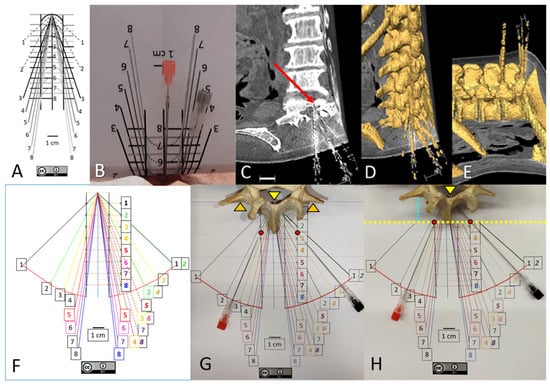
Figure 1
Open AccessReview
Noise as Medicine: The Role of Microbial and Electrical Noise in Restoring Neuroimmune Tolerance Through Stochastic Resonance
by
Eneidy Piña Mojica, Joao Victor Ribeiro and Felipe Fregni
NeuroSci 2025, 6(4), 118; https://doi.org/10.3390/neurosci6040118 - 18 Nov 2025
Abstract
►▼
Show Figures
The rising prevalence of neuroimmune disorders such as multiple sclerosis and fibromyalgia has renewed interest in the hygiene hypothesis, which posits that reduced early-life microbial exposure deprives the immune system of formative “noise” that calibrates thresholds of tolerance. We extended this framework by
[...] Read more.
The rising prevalence of neuroimmune disorders such as multiple sclerosis and fibromyalgia has renewed interest in the hygiene hypothesis, which posits that reduced early-life microbial exposure deprives the immune system of formative “noise” that calibrates thresholds of tolerance. We extended this framework by introducing stochastic resonance (SR), a system phenomenon in which optimally tuned noise enhances weak-signal detection in nonlinear networks, as a potential surrogate for missing microbial variability. As electrical noise and subthreshold stimulation have been shown to modulate cortical excitability and enhance perception, microbial noise may be necessary for sustaining immune plasticity. Conversely, a lack of stimulation, whether microbial or electrical, can lead to maladaptive states characterized by dysregulated signaling and heightened vulnerability to chronic inflammation. Evidence from immunology highlights noise-aware processes, such as T-cell receptor proofreading, NF-κB pulsatility, and cytokine quorum sensing, all of which exploit stochastic fluctuations. Computational tumor–immune models similarly suggest that tuned noise can optimize immune surveillance. Clinical data from neuroscience demonstrate that subsensory electrical noise improves motor excitability and sensory perception, whereas vagus nerve stimulation modulates inflammatory pathways, underscoring translational feasibility. We propose that SR reframes noise from a biological error to a therapeutic resource capable of recalibrating dysregulated neuroimmune thresholds. This conceptual synthesis positions microbial and electrical noise as parallel modulators of tolerance and outlines testable predictions with translational potential for neuroimmune disorders.
Full article

Figure 1
Open AccessArticle
Autism in Adulthood: Psychiatric Comorbidity in High-Functioning Autistic Adults in an Outpatient Clinical Population
by
Martina Pelle, Federico Fiori Nastro, Chiara Maimone, Stefano Malara, Vincenzo Di Lazzaro, Giorgio Di Lorenzo and Michele Ribolsi
NeuroSci 2025, 6(4), 117; https://doi.org/10.3390/neurosci6040117 - 18 Nov 2025
Abstract
►▼
Show Figures
Background: Autism Spectrum Disorder (ASD) is a complex and heterogeneous neurodevelopmental condition. Diagnosing ASD in adults, especially in milder forms, remains challenging due to camouflaging strategies, adaptive behaviors, and frequent psychiatric comorbidities. Despite increased awareness, there is a critical need to improve recognition
[...] Read more.
Background: Autism Spectrum Disorder (ASD) is a complex and heterogeneous neurodevelopmental condition. Diagnosing ASD in adults, especially in milder forms, remains challenging due to camouflaging strategies, adaptive behaviors, and frequent psychiatric comorbidities. Despite increased awareness, there is a critical need to improve recognition and tailored interventions for adults with ASD. This study aims to examine the prevalence of psychiatric comorbidities among individuals diagnosed with ASD. Methods: This retrospective cross-sectional study examined 64 adults diagnosed with ASD (n = 29 females, 45.3%; age: range, 18–57 years; mean ± SD, 30.9 ± 8.92), who accessed two university hospital outpatient units in Rome between September 2023 and January 2025. All participants were assessed using the Autism Diagnostic Observation Schedule, Second Edition–Module 4 (ADOS-2). Psychiatric comorbidities were evaluated using clinical assessments and the Mini-International Neuropsychiatric Interview (M.I.N.I.) Plus. Results: All patients received an ASD diagnosis without intellectual disability. Forty-four (68.8%) presented with at least one psychiatric comorbidity, most commonly depressive (25.0%) and anxiety disorders (9.4%). Over half of the participants (57.4%) reported at least mild depressive symptoms, and 42.6% exhibited moderate to severe depressive levels. Conclusions: High rates of psychiatric comorbidities, particularly mood and anxiety disorders, were observed, underscoring the importance of comprehensive, multidisciplinary assessment and individualized interventions. Further research using larger samples and rigorous methodologies is warranted to better characterize the ASD phenotype in adults and guide targeted therapeutic strategies.
Full article
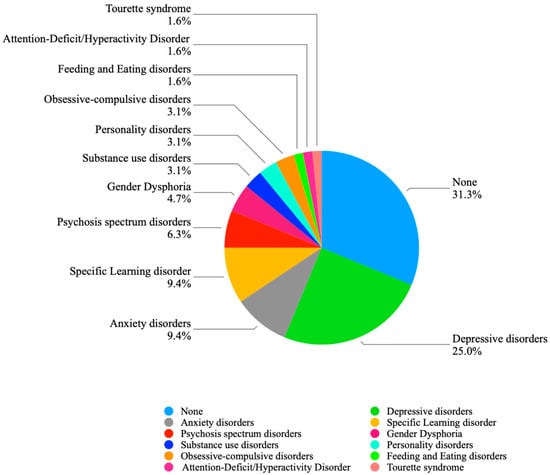
Figure 1
Open AccessArticle
Protein Kinase Expression of the AKT/mTOR Signaling Pathway in Peripheral Mononuclear Cells of Schizophrenia Patients: A Pilot Study
by
Anastasiia S. Boiko, Ekaterina V. Mikhalitskaya, Elena G. Kornetova, Nikolay A. Bokhan and Svetlana A. Ivanova
NeuroSci 2025, 6(4), 116; https://doi.org/10.3390/neurosci6040116 - 17 Nov 2025
Abstract
►▼
Show Figures
A comprehensive study of the contribution of dysfunction AKT/mTOR signaling to the pathogenesis of schizophrenia is needed. The aim of the study is to determine the expression of the protein kinase AKT/mTOR signaling pathway in peripheral mononuclear cells (PMCs) of patients with schizophrenia.
[...] Read more.
A comprehensive study of the contribution of dysfunction AKT/mTOR signaling to the pathogenesis of schizophrenia is needed. The aim of the study is to determine the expression of the protein kinase AKT/mTOR signaling pathway in peripheral mononuclear cells (PMCs) of patients with schizophrenia. Determination of AKT1, mTOR, p70S6K, GSK3-α, and GSK3-β in mononuclears was performed on multiplex analyzers. Statistical data processing was carried out using SPSS. The critical significance level for the differences was 0.05. The study included 58 patients with schizophrenia (F20) and 60 healthy individuals. We found an increase in the expression of AKT1 and p706SK in PM׳s of patients (p = 0.006, p = 0.001). Analysis of kinase expression was carried out depending on clinical characteristics (type of course, leading symptoms and duration of the schizophrenia). Increased expression of GSK3-α and GSK3-β was detected in patients with a duration of disease more than 5 years (p = 0.019, p = 0.018). The AKT/mTOR signaling cascade may play a significant role in the pathogenesis of schizophrenia. We can assume that signaling pathways are involved in neurobiological processes and can be targets for new methods of pharmacotherapy, prognosis and diagnosis of mental disorders.
Full article
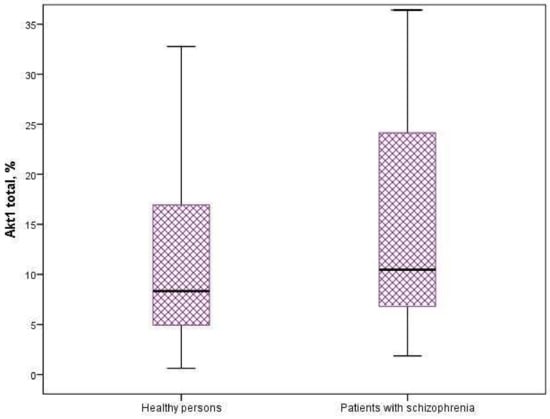
Figure 1
Open AccessReview
Duropathies: A Narrative Overview of a Neglected Concept—Part One: Anatomical, Embryological, and Pathophysiological Elements
by
Marialuisa Zedde and Rosario Pascarella
NeuroSci 2025, 6(4), 115; https://doi.org/10.3390/neurosci6040115 - 14 Nov 2025
Abstract
Duropathies encompass a spectrum of disorders linked to spinal dural tears and cerebrospinal fluid (CSF) leaks, resulting in significant neurological manifestations. This review synthesizes the current literature on duropathies, focusing on their anatomical and pathophysiological aspects, including conditions such as superficial siderosis, spontaneous
[...] Read more.
Duropathies encompass a spectrum of disorders linked to spinal dural tears and cerebrospinal fluid (CSF) leaks, resulting in significant neurological manifestations. This review synthesizes the current literature on duropathies, focusing on their anatomical and pathophysiological aspects, including conditions such as superficial siderosis, spontaneous intracranial hypotension, and spinal cord herniation. The methodologies employed include comprehensive evaluations through neuroimaging techniques such as MRI and CT myelography, alongside clinical assessments of symptoms like ataxia, hearing loss, and cognitive impairment. Key findings highlight the prevalence of dural defects in patients with superficial siderosis and the association of persistent CSF leaks with various neurological impairments. The review emphasizes the need for a standardized diagnostic and therapeutic approach to enhance patient management and improve outcomes. By addressing the interrelated nature of these conditions, the study underscores the importance of early intervention to mitigate long-term neurological consequences. Overall, the findings advocate for further research to elucidate the mechanisms underlying duropathies and the development of effective treatment strategies, ultimately aiming to improve the quality of life for affected individuals.
Full article
Open AccessReview
Update on Disease-Modifying Pharmacological Treatments for Frontotemporal Dementia (FTD): A Scoping Review of Registered Trials
by
Patrick Bartoshyk and Rónán O’Caoimh
NeuroSci 2025, 6(4), 114; https://doi.org/10.3390/neurosci6040114 - 13 Nov 2025
Abstract
Frontotemporal dementia (FTD) represents a cluster of adult-onset neurodegenerative diseases resulting from a combination of genetic and epigenetic factors. Currently, treatment is symptomatic and there are no licensed disease-modifying therapies available. The aim of this review was to provide an overview of ongoing
[...] Read more.
Frontotemporal dementia (FTD) represents a cluster of adult-onset neurodegenerative diseases resulting from a combination of genetic and epigenetic factors. Currently, treatment is symptomatic and there are no licensed disease-modifying therapies available. The aim of this review was to provide an overview of ongoing or recently completed clinical studies targeting disease modification in FTD. A structured search of interventional trials of pharmacological compounds was conducted on three clinical trial registries (National Library of Medicine Clinical Trials, European Union Clinical Trials, and the Australian New Zealand Clinical Trials registries) up to September 2025. Twelve interventional trials were found. Half targeted autosomal-dominant progranulin (GRN) mutations (n = 6) and half examined therapies targeting neuroinflammatory-induced sporadic FTD (n = 6). The interim results of the early-phase (1/2) randomized controlled trials (RCTs), comprising three ongoing gene replacement studies (PROCLAIM, ASPIRE-FTD, upliFT-D) and one immune-modulating monoclonal antibody (INFRONT, now in phase 3)—all targeting the FTD-GRN mutation—show safety, tolerability, and effectiveness in restoring progranulin levels. Two recently completed phase 2 RCTs for sporadic FTD targeting neuroinflammation, the PEA-FTD and C9orf72 ALS/FTD trials, show disease-modifying potential. While interim results from six trials suggest clear mechanistic efficacy, prospective high-quality later-phase RCTs are required to ascertain long-term clinical efficacy. Since familial FTD encompasses less than half of the people with this disease, it is important to continue exploring the underlying pathophysiology, neuroimmunology, and treatment of epigenetic-induced sporadic FTD.
Full article
(This article belongs to the Topic Translational Advances in Neurodegenerative Dementias, Second Edition)
►▼
Show Figures

Figure 1
Open AccessReview
Intraoperative Ultrasound in Brain and Spine Surgery: Current Applications, Translational Value and Future Perspectives
by
Carmelo Pirri, Nina Pirri, Veronica Macchi, Andrea Porzionato, Carla Stecco and Raffaele De Caro
NeuroSci 2025, 6(4), 113; https://doi.org/10.3390/neurosci6040113 - 12 Nov 2025
Abstract
►▼
Show Figures
Intraoperative ultrasound (IOUS) has developed from a rudimentary adjunct into a versatile modality that now plays a crucial role in neurosurgery. Offering real-time, radiation-free and repeatable imaging at the surgical site, it provides distinct advantages over intraoperative magnetic resonance (MRI) and computed tomography
[...] Read more.
Intraoperative ultrasound (IOUS) has developed from a rudimentary adjunct into a versatile modality that now plays a crucial role in neurosurgery. Offering real-time, radiation-free and repeatable imaging at the surgical site, it provides distinct advantages over intraoperative magnetic resonance (MRI) and computed tomography (CT) in terms of accessibility, workflow integration and cost. The clinical spectrum of IOUS is broad: in cranial surgery it enhances the extent of resection of gliomas and metastases, supports dissection in meningiomas and enables localization of MRI-negative pituitary adenomas; in spinal surgery, it guides resection of intradural and intramedullary tumors, assists in myelotomy planning and confirms decompression in degenerative conditions such as cervical myelopathy and ossification of the posterior longitudinal ligament. IOUS also offers unique insights into cerebrospinal fluid disorders, including arachnoid webs, cysts, syringomyelia and Chiari malformation, where it visualizes cord compression and CSF flow restoration. In trauma and oncological emergencies, it provides immediate confirmation of decompression, directly influencing surgical decisions. Recent innovations, including contrast-enhanced ultrasound, elastography, three-dimensional navigated systems and experimental integration with artificial intelligence and robotics, are extending its functional scope. Despite heterogeneity of evidence and operator dependence, IOUS is steadily transitioning from an adjunctive tool to a cornerstone of multimodal intraoperative imaging, bridging precision, accessibility and innovation in contemporary neurosurgical practice.
Full article

Figure 1
Open AccessArticle
Exploratory Behavioral Study of the Production and Processing of French Categorical Liaisons in Children with Expressive DLD
by
Elisabeth Cesari, Bernard Laks and Frédéric Isel
NeuroSci 2025, 6(4), 112; https://doi.org/10.3390/neurosci6040112 - 6 Nov 2025
Abstract
►▼
Show Figures
Categorical liaison—defined as the obligatory pronunciation of a latent word in the form of a final consonant when followed by a vowel as the initial word or a word beginning with a silent “h” (e.g., des‿ours [dezuʁs])—is a robust phonological phenomenon in French
[...] Read more.
Categorical liaison—defined as the obligatory pronunciation of a latent word in the form of a final consonant when followed by a vowel as the initial word or a word beginning with a silent “h” (e.g., des‿ours [dezuʁs])—is a robust phonological phenomenon in French and an informative window into morphophonological development. This exploratory behavioral study investigates the dissociation between perception and production of categorical liaisons among 24 French-speaking children aged 6–10 years diagnosed with expressive Developmental Language Disorder (DLD). A battery of nine ad hoc tasks assessed perception and production across words, pseudowords, noun phrases, and sentences. Results showed that children with DLD performed comparably to typically developing peers in perceiving unrealized categorical liaisons but exhibited significantly more omissions in production, regardless of context or age. Production deficits correlated with reduced working memory and inhibitory control. These preliminary findings provide descriptive data that can inform the development of standardized assessment tools and generate hypotheses about the cognitive mechanisms underlying categorical liaison difficulties in DLD.
Full article

Figure 1

Journal Menu
► ▼ Journal Menu-
- NeuroSci Home
- Aims & Scope
- Editorial Board
- Reviewer Board
- Topical Advisory Panel
- Instructions for Authors
- Special Issues
- Topics
- Topical Collections
- Article Processing Charge
- Indexing & Archiving
- Editor’s Choice Articles
- Most Cited & Viewed
- Journal Statistics
- Journal History
- Journal Awards
- Society Collaborations
- Conferences
- Editorial Office
Journal Browser
► ▼ Journal BrowserHighly Accessed Articles
Latest Books
E-Mail Alert
News
Topics
Topic in
Brain Sciences, Neurology International, NeuroSci
Language: From Hearing to Speech and Writing
Topic Editors: Ana Paula Soares, David ToméDeadline: 31 December 2025
Topic in
Brain Sciences, Neurology International, NeuroSci
Advances in Neurorehabilitation
Topic Editors: Nicola Marotta, Antonio Ammendolia, Ennio LoprestiDeadline: 31 January 2026
Topic in
Brain Sciences, CTN, Neurology International, NeuroSci
Neurological Updates in Neurocritical Care
Topic Editors: Gabriele Melegari, Elisabetta BertelliniDeadline: 28 February 2026
Topic in
Brain Sciences, Neurology International, NeuroSci
Advances in High Grade Glioma Research
Topic Editors: Assunta Virtuoso, Agata Grazia D’Amico, Celeste Caruso BavisottoDeadline: 10 March 2026

Conferences
Special Issues
Special Issue in
NeuroSci
Cognitive Impairment and Neuropsychiatric Dysfunctions in Multiple Sclerosis (Volume II)
Guest Editor: Ugo NocentiniDeadline: 31 December 2025
Special Issue in
NeuroSci
Gut–Brain Axis in Neurodevelopment: Microbial Metabolites and Neurological Function
Guest Editors: Xuesong Zhang, Ningning LiDeadline: 31 January 2026
Special Issue in
NeuroSci
Expanding the Clinical Landscape of Autoimmune Neurology
Guest Editor: Marco ZoccaratoDeadline: 31 March 2026
Special Issue in
NeuroSci
Parkinson's Disease Research: Current Insights and Future Directions
Guest Editor: Ikuko MiyazakiDeadline: 31 May 2026
Topical Collections
Topical Collection in
NeuroSci
Neuroanatomy of Consciousness and the Will
Collection Editor: James Sonne








